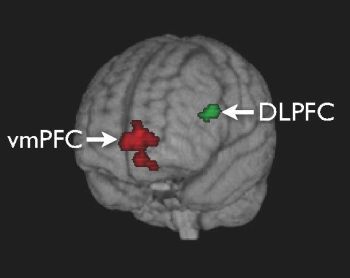Scientists in California are reporting use of a first-of-its-kind approach to craft genetically engineered microbes with the much-sought ability to transform switchgrass, corn cobs, and other organic materials into methyl halides — the raw material for making gasoline and a host of other commercially important products.
The new bioprocess could help pave the way for producing biofuels from agricultural waste, easing concerns about stress on the global food supply from using corn and other food crops. Their study is scheduled for the May 20 issue of the Journal of the American Chemical Society.
New research that uses an innovative approach to study, for the first time, the relative contributions of food and exercise habits to the development of the obesity epidemic has concluded that the rise in obesity in the United States since the 1970s was virtually all due to increased energy intake.
How much of the obesity epidemic has been caused by excess calorie intake and how much by reductions in physical activity has been long debated and while experts agree that making it easier for people to eat less and exercise more are both important for combating it, they debate where the public health focus should be.
When you're on a diet, deciding to skip your favorite calorie-laden foods and eat something healthier takes a whole lot of self-control--an ability that seems to come easier to some of us than others. Now, scientists from the California Institute of Technology (Caltech) have uncovered differences in the brains of people who are able to exercise self-control versus those who find it almost impossible.
The key? While everyone uses the same single area of the brain to make these sorts of value-laden decisions, a second brain region modulates the activity of the first region in people with good self-control, allowing them to weigh more abstract factors--healthiness, for example--in addition to basic desires such as taste to make a better overall choice.
"The method we have developed means we can simultaneously detect various kinds of antibiotic residues (macrolides, tetracyclines, quinolones and sulfonamides) in honey", Antonia Garrido, lead author of the study and the researcher in charge of the UAL's Contaminants Analytical Chemistry Research Group, told Servicio de Información y Noticias Científicas (SINC).
In order to develop this method, the results of which have been published recently in the Journal of Agricultural and Food Chemistry, the researchers employed ultra performance liquid chromatography, a technique that makes it possible to separate the components of a sample, together with mass spectrometry, which permits the simultaneous identification of up to 17 antibiotics.
With the new movie ‘Star Trek’ opening in theaters across the nation, one thing movie goers will undoubtedly see is the Starship Enterprise racing across the galaxy at the speed of light but two Baylor University physicists believe they have an idea that can turn traveling at the speed of light from science fiction to science, and that their idea does not break any laws of physics.
An international team of geologists may have uncovered the answer to an age-old question - an ice-age-old question, that is. It appears that Earth's earliest ice age may have been due to the rise of oxygen in Earth's atmosphere, which consumed atmospheric greenhouse gases and chilled the earth.
Scientists from the University of Maryland, including post-doctoral fellows Boswell Wing and Sang-Tae Kim, graduate student Margaret Baker, and professors Alan J. Kaufman and James Farquhar, along with colleagues in Germany, South Africa, Canada and the United States, uncovered evidence that the oxygenation of Earth's atmosphere - generally known as the Great Oxygenation Event - coincided with the first widespread ice age on the planet.
 Opioid Addicts Are Less Likely To Use Legal Opioids At The End Of Their Lives
Opioid Addicts Are Less Likely To Use Legal Opioids At The End Of Their Lives More Like Lizards: Claim That T. Rex Was As Smart As Monkeys Refuted
More Like Lizards: Claim That T. Rex Was As Smart As Monkeys Refuted Study: Caloric Restriction In Humans And Aging
Study: Caloric Restriction In Humans And Aging Science Podcast Or Perish?
Science Podcast Or Perish?









